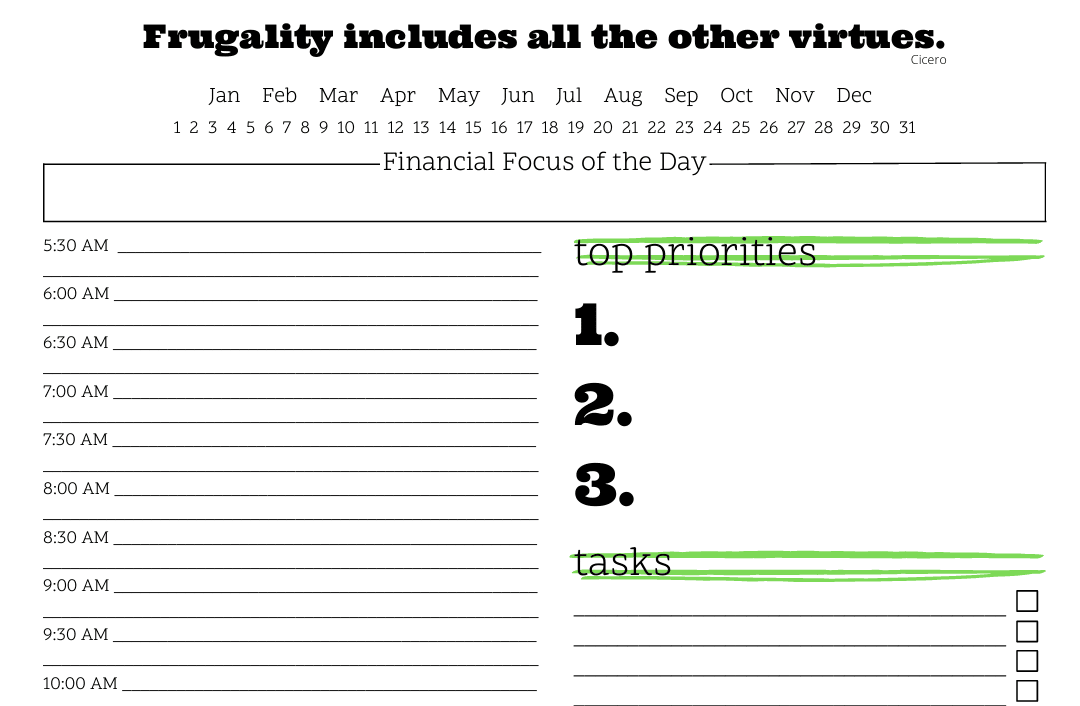This article may contain references to products or services from one or more of our advertisers or partners. We may receive compensation when you click on links to those products or services. Nonetheless, our opinions are our own.
- Key Highlights
- Introduction
- Understanding the Basics of Bank Accounts
- Definition and Purpose of Checking Accounts
- Definition and Purpose of Savings Accounts
- Comparing Features of Checking and Savings Accounts
- Accessibility and Usage Frequency
- Interest Rates and Earning Potential
- A Beginner’s Guide to Bank Accounts
- What You Need to Open a Bank Account
- Choosing Between Checking and Savings Accounts
- Step-by-Step Guide to Opening a Bank Account
- Managing a Checking Account
- Growing Your Savings
- Conclusion
- Frequently Asked Questions
- Recommended Reads
Key Highlights
- Checking accounts are designed for your daily money needs, allowing easy access to your funds through debit cards, checks, and online banking.
- Savings accounts are for saving money over time and often offer higher interest rates than checking accounts.
- The major differences between these accounts are how you access your money, the interest rates offered, and any fees involved.
- Understanding your financial goals is key to choosing the best account type for your needs.
- Effectively managing both checking and savings accounts is crucial for building a strong financial foundation.
Introduction
Navigating personal finance starts with understanding the basic tools available to you. Checking and savings accounts are two key accounts for managing your money. This guide will help you understand the differences between them and explain how each can contribute to your financial goals. Whether you’re new to banking or just need a quick refresher, this overview will give you the knowledge you need to make smart choices with your money.
Understanding the Basics of Bank Accounts
Bank accounts are secure places to store your money and manage your finances. You can open these accounts at banks or credit unions, and each type of account serves a different purpose. Understanding the differences between checking and savings accounts is essential for choosing the right account for your needs.
- Checking accounts are primarily used for daily transactions, like receiving deposits and paying bills. They offer easy access to your money for everyday spending.
- Savings accounts are meant for saving money over time. These accounts generally offer higher interest rates, allowing your savings to grow over time.
Definition and Purpose of Checking Accounts
A checking account is essential for managing your daily financial needs. It serves as the central hub for your income and expenses. With a checking account, you can deposit money, pay bills, and withdraw cash whenever needed.
One of the major benefits of a checking account is its flexibility. With direct deposit, your paycheck can go straight into your account, eliminating the need for paper checks. You can also set up automatic bill payments, ensuring you pay utility bills, credit cards, and other recurring payments on time.
Checking accounts typically come with a debit card, which makes shopping and withdrawing cash from ATMs simple. Many banks also offer overdraft protection, which helps prevent you from incurring fees if you spend more than your available balance.
Definition and Purpose of Savings Accounts
Unlike checking accounts, savings accounts are designed for saving money over the long term. These accounts are ideal for purchasing a home, vacationing, or building a retirement fund.
The key advantage of savings accounts is the interest they earn. While the interest rate may be lower than other investments, savings accounts generally offer a better return than checking accounts. The exact rate depends on the bank and the specific account type.
If you’re looking for a higher interest rate, consider money market accounts (MMAs). These accounts often offer higher interest rates, though they may come with conditions such as a minimum balance requirement or withdrawal limits.
Comparing Features of Checking and Savings Accounts
Both checking and savings accounts serve important functions, but they have key differences. These differences impact how easily you can access your money, your interest, and any fees you may incur. Understanding these differences allows you to select the account that best suits your financial habits and goals.
Accessibility and Usage Frequency
- Checking Accounts: These are designed for frequent use, allowing you to easily access funds through debit cards, checks, and online banking. You can make numerous transactions daily without restrictions.
- Savings Accounts: These accounts typically limit how often you can withdraw money. While many savings accounts offer an ATM card, they often restrict withdrawals to a certain number of monthly transactions.
Interest Rates and Earning Potential
- Checking Accounts: Most checking accounts offer low or no interest. Some may provide minimal interest, but the rates are typically lower than savings accounts.
- Savings Accounts: Savings accounts usually offer higher interest rates than checking accounts, allowing your money to grow over time. However, the rates can vary depending on the institution and account type.
A Beginner’s Guide to Bank Accounts
Opening your first bank account is a major step toward managing your finances. It provides a secure place to store your money and makes it easier to track your spending.
What You Need to Open a Bank Account
To open a bank account, whether checking or savings, you typically need:
- A valid photo ID (e.g., driver’s license or passport)
- Your Social Security number (for identification and tax purposes)
- An initial deposit, which varies depending on the bank and type of account
Be sure to read the terms and conditions before opening an account. If you have questions, don’t hesitate to ask a bank representative or consult a financial advisor.
Choosing Between Checking and Savings Accounts
Consider your financial goals and spending habits when choosing between a checking or savings account. Here are a few points to guide your decision:
- Financial Goals: Are you saving for a big purchase or managing daily expenses?
- Fees: Watch out for monthly maintenance fees and other charges. Some accounts waive these fees if you maintain a certain balance.
- Balance Requirements: Some savings accounts with higher interest rates may require a minimum balance.
Having both types of accounts is a smart strategy. A checking account will help you manage daily expenses, while a savings account will support your long-term goals.
Step-by-Step Guide to Opening a Bank Account
Here’s a simple process for opening a bank account:
Step 1: Determine Your Banking Needs
Think about what you want to achieve with your bank account:
- Are you managing daily expenses, saving for the future, or both?
- How often do you expect to make transactions? If frequent transactions are expected, a checking account may be more suitable.
Step 2: Research Bank Account Offers
Once you know what you need, compare different bank account options. Consider:
- Fees: Look for accounts with low or no monthly maintenance fees.
- Interest Rates: Compare savings account rates to ensure you’re getting the best return.
- Special Offers: Check for promotions like fee waivers for new accounts or higher interest rates for savings accounts.
Step 3: Prepare Necessary Documentation
Ensure you have the following documents ready:
- Valid photo ID
- Social Security number
- Proof of address (e.g., utility bill or lease agreement)
Step 4: Apply for an Account
You can apply for an account online, through a mobile app, or in person at a bank branch. The process is straightforward, and most banks allow you to complete the application quickly.
Managing a Checking Account
- Track Your Spending: Regularly check your account statements to monitor spending.
- Set Up Alerts: Use bank alerts to notify you of low balances or unusual activity.
- Avoid Fees: Be aware of fees such as overdraft charges and ATM withdrawal fees, and plan your account usage accordingly.
Growing Your Savings
- Automate Savings: Set up automatic transfers to move money from checking to savings.
- Shop for Better Rates: Compare interest rates regularly and move your money to higher-yielding accounts when possible.
- Minimize Withdrawals: The fewer times you withdraw from your savings, the more interest you’ll earn.
Conclusion
In conclusion, understanding the differences between checking and savings accounts will help you make better financial decisions. Checking accounts are ideal for daily spending, while savings accounts allow your money to grow over time. By carefully selecting the right accounts and managing them well, you can build a strong financial foundation.
If you have more questions, feel free to check out our FAQ section for further information.
Frequently Asked Questions
What are the main differences between checking and savings accounts?
Checking accounts are for everyday spending, with easy access to funds. On the other hand, savings accounts offer higher interest rates and are meant for saving money over time, but they often limit the number of withdrawals.
Can I have both a checking and a savings account?
Yes, many people choose to have both types of accounts. This allows them to manage daily expenses with their checking account while saving for future goals in their savings account.

Reviewed and edited by Albert Fang.
See a typo or want to suggest an edit/revision to the content? Use the contact us form to provide feedback.
At FangWallet, we value editorial integrity and open collaboration in curating quality content for readers to enjoy. Much appreciated for the assist.
Did you like our article and find it insightful? We encourage sharing the article link with family and friends to benefit as well - better yet, sharing on social media. Thank you for the support! 🍉
Article Title: What’s the Difference Between Checking and Savings Accounts
https://fangwallet.com/2024/12/12/difference-between-checking-and-savings-accounts/The FangWallet Promise
FangWallet is an editorially independent resource - founded on breaking down challenging financial concepts for anyone to understand since 2014. While we adhere to editorial integrity, note that this post may contain references to products from our partners.
The FangWallet promise is always to have your best interest in mind and be transparent and honest about the financial picture.
Become an Insider

Subscribe to get a free daily budget planner printable to help get your money on track!
Make passive money the right way. No spam.
Editorial Disclaimer: The editorial content on this page is not provided by any of the companies mentioned. The opinions expressed here are the author's alone.
The content of this website is for informational purposes only and does not represent investment advice, or an offer or solicitation to buy or sell any security, investment, or product. Investors are encouraged to do their own due diligence, and, if necessary, consult professional advising before making any investment decisions. Investing involves a high degree of risk, and financial losses may occur including the potential loss of principal.
Source Citation References:
+ Inspo












































